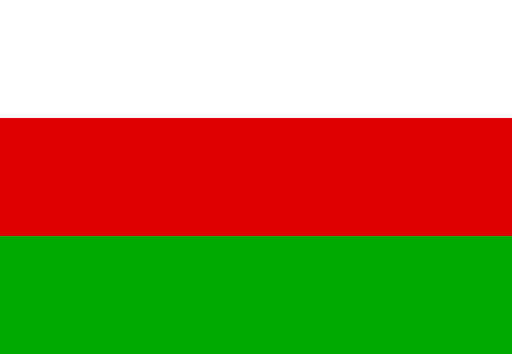Sincelejo
Department

Flag of the city
The flag features three horizontal bands of equal width. The topmost stripe is white, symbolizing peace, purity, or unity. The middle band is red, often representing bravery, strength, or the blood of those who fought for the region. The bottom stripe is green, which typically stands for fertility, hope, or the lushness of the land. Together, these colors could embody the core values, history, and natural beauty of the region or entity it represents.”
This is a generic interpretation based on common meanings associated with these colors in flags. To understand the specific symbolism behind the flag of a particular place or organization, one would need to consult sources or documents specific to that entity.


Slogan of the city
Sincelejo, the vibrant capital of Colombia’s Sucre department, operates under the powerful motto, “Más Soluciones, Más Compromiso” (More Solutions, More Commitment).” This principle encapsulates the city’s proactive approach to challenges and its unwavering commitment to its residents. As a regional hub, Sincelejo has always demonstrated resilience and innovation. The city’s motto is not merely a set of words but a reflection of its ethos and spirit. Visitors and residents alike are touched by this energy, making Sincelejo a unique and inspiring destination in Colombia. Experience a city where solutions meet passion, and dedication is a way of life.
History
During the pre-Columbian period, the area was home to the Zenú indigenous tribes.
On October 4, 1535, marking the feast of Francis of Assisi, Sincelejo was established and named San Francisco de Asís de Sincelejo. It originally functioned under Alonso Padilla’s guardianship between 1610 and 1640 and was built atop a Zenú settlement. The indigenous Zenú faced exploitation at the hands of the Spanish settlers.
Later, on November 21, 1775, Spanish captain Antonio de la Torre y Miranda re-established Sincelejo under the directive of Cartagena’s governor, Juan de Torrezar Díaz Pimienta. The town’s foundation began with the erection of a church, and surrounding lands were allocated to regional inhabitants to form a religious and political hub. Although intended to mimic the typical Spanish colonial layout with a central church and square, natural creeks hindered this plan.
By 1812, the town provided refuge to revolutionary priests during La Rebelión de los Curas. By 1887, Sincelejo emerged as one of the most prominent settlements in the Cartagena Province. Briefly, in 1908, it was the capital of its namesake department, only to return to Cartagena Province in 1910. Tragically, in 1912, a massive fire devastated the city’s core, but resilient citizens rebuilt it. Finally, with the Sucre Department’s establishment in 1966, Sincelejo was designated as its capital.

Geography
Situated at approximately 9.2951° N latitude and 75.3967° W longitude, Sincelejo lies in a hilly terrain stretching from the mountainous regions to the boundaries of the plateau. This city is elevated between 50 to 260 meters above sea level. These gentle mountain foothills start from the marine fluvial plains in the west and reach the edge of the nearby town, Palmito.
Surrounding Sincelejo are several municipalities. To the west are Palmito and Tolú, with Sampués and the Córdoba Department to its south. Corozal and Morroa can be found to the east, while Toluviejo is to its north. Given its central position, Sincelejo is approximately 40 km from Tolú, 16 km from Corozal, and about 20 km from Palmito.
Boasting a tropical climate, Sincelejo’s temperatures remain consistently around 27°C (80.6°F). As per the Köppen system, it falls under a tropical wet and dry climate (Aw). The city experiences a dry season from December to February, followed by peak rainfall around April or May. A short dry spell, known as “Veranillo de San Juan”, occurs during June and July before precipitation rises again.

Population
72,000 (2017)
82,425 (2023 projection)
One photo representative of the city
The city has various attraction centers with beauty to behold. These include Pink Lake or Laguna Rosada; El Sagú; Las Delicias; Caños Negros Waterfalls, and many more.

Etymology
310,456(2023)
277,773 (2018)
Sincelejo has experienced notable population growth over recent years. In 2018, the city recorded a population of 277,773 inhabitants. Fast forward to 2023, and this figure has risen to 310,456 residents, indicating a substantial increase in just five years. This growth rate suggests an annual increase of around 2.37%, which is significant for a city of its size.
One photo representative of the city
Majagual Plaza, often affectionately referred to as “La Placita de Majagual,” holds a special place in the heart of Sincelejo. This iconic spot has been immortalized in various folk songs by renowned artists, including the legendary Joe Arroyo. For many years, the plaza was the central venue for the city’s famed corralejas, until these events transitioned to La Plaza de Mochila. Since that shift, Majagual Plaza has primarily been a hub for sports activities. In a bid to rejuvenate the space, 2007 saw a significant refurbishment of the plaza, breathing new life into it. Today, visitors are greeted by a striking arch-shaped sculpture that stands as the centerpiece of the plaza. The expansive square surrounding it serves as a gathering point for various cultural events, showcasing the rich tapestry of Sincelejo’s heritage and its commitment to fostering community engagement.

